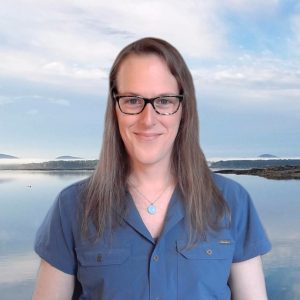Van Dam’s new tool helps predict pollution vulnerability in coastal waters statewide

Ph.D. candidate Bea Van Dam has created a new mapping tool that can help scientists and resource managers better predict how vulnerable different coastal estuary settings in Maine are to pollution.
Pollution vulnerability in estuaries and bays can be determined by the source of contamination, how it is transported to coastal waters and how long it can last before flushing out to sea based on the physical and hydrological characteristics of the watershed, also known as residence time. The “Estuary Builder” tool, developed by Van Dam from UMaine’s School of Earth and Climate Sciences, provides related data for stream and river watersheds and embayments along the entire Maine coastline.
Van Dam, who is advised by UMaine associate professor Sean Smith, developed the Estuary Builder to assist with the management of harmful coastal bacteria pollution events that affect shellfisheries. Bacteria and other contaminants on land can run off into estuaries during large rain events, and they travel through coastal waterways where they can be taken up by clams and other filter feeders. The consumption of these contaminated shellfish can cause sickness, so the Maine Department of Marine Resources temporarily closes mudflats where clams and filter feeders reside within the affected watersheds.
The Estuary Builder allows users to draw an outlet line across an embayment mouth on an ArcGIS map to receive pollution-related information for the estuary and contributing watershed. It also identifies which of several archetypical Maine coastal setting types the delineated area belongs to, allowing managers to make comparisons to similar areas of the coast.
The research was initiated by a National Science Foundation EPSCOR (Established Program to Stimulate Competitive Research) grant led by the Senator George J. Mitchell Center for Sustainability Solutions. The outgrowth of the effort has included extensive work funded by the Maine Water Resources Research Institute and the Maine Agriculture and Forest Experiment Station to measure, model and map conditions driving coastal bacteria pollution in thousands of stream and river watersheds draining into Maine’s tidal coastline.
Read the full story at UMaine News
